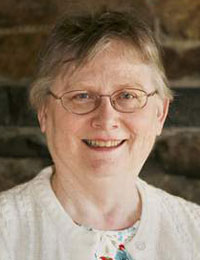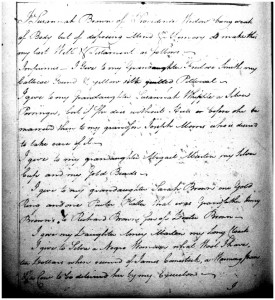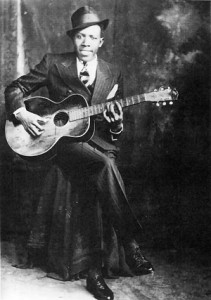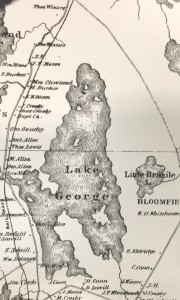 One of my recent research cases involved searching for information within societies and organizations. It began with searching in newspapers for an 1849 obituary in order to gather more biographical information about my research subject, but I also looked for any references to him in articles and classifieds ads. I first located his death notice, and learned that he was a printer – a compositor of the Boston Transcript. Continue reading Research in organizational records
One of my recent research cases involved searching for information within societies and organizations. It began with searching in newspapers for an 1849 obituary in order to gather more biographical information about my research subject, but I also looked for any references to him in articles and classifieds ads. I first located his death notice, and learned that he was a printer – a compositor of the Boston Transcript. Continue reading Research in organizational records
Tag Archives: Critical Analysis
Deeds: Part Three
 Following up on my previous post, Jerry Anderson reminds me that some colonies did not require a wife to sign a deed releasing her dower rights. This just emphasizes the complexity of the subject of land records and the fact that you will need to learn all the ins and outs that apply to the records you are searching – not exciting stuff, but necessary. I am not up to speed on current genealogy how-to publications, so perhaps readers can chime in here. The old classic I used was Val D. Greenwood’s The Researcher’s Guide to American Genealogy. I just looked it up online and it is still available – a copy in “acceptable” condition can be bought for $1.99 at www.barnesandnoble.com! If you happen to find a copy in your library, check it out. Of course, it will be out of date regarding technology, but basic research information never changes. Continue reading Deeds: Part Three
Following up on my previous post, Jerry Anderson reminds me that some colonies did not require a wife to sign a deed releasing her dower rights. This just emphasizes the complexity of the subject of land records and the fact that you will need to learn all the ins and outs that apply to the records you are searching – not exciting stuff, but necessary. I am not up to speed on current genealogy how-to publications, so perhaps readers can chime in here. The old classic I used was Val D. Greenwood’s The Researcher’s Guide to American Genealogy. I just looked it up online and it is still available – a copy in “acceptable” condition can be bought for $1.99 at www.barnesandnoble.com! If you happen to find a copy in your library, check it out. Of course, it will be out of date regarding technology, but basic research information never changes. Continue reading Deeds: Part Three
Poor relief records

Vita Brevis readers are likely all too familiar with the problem of brick walls in genealogical research. Many are aware of the uses of probate and estate records, but what if your ancestors are not to be found in the probate records of the area where they died? There can be any number of reasons, for economic conditions in the colonial and early Federal period were often unstable, and a family could find itself experiencing periods of both comfort and destitution at one point or another. Fortunately, there are a number of techniques to track less wealthy ancestors, both in the interest of making family connections and learning something of the reality of their lives. Continue reading Poor relief records
Quality control
Editor’s Note: This is part three of a series on digitizing our special collections. The previous posts can be read here and here.
 Good news! The next phase of our digitization project is under way. We’ve just received the first batch of images from our scanning partner, which means we can begin work on the next step: quality control.
Good news! The next phase of our digitization project is under way. We’ve just received the first batch of images from our scanning partner, which means we can begin work on the next step: quality control.
In the last post, I talked about the organizational aspects of digitization – sorting and physically preparing the items, creating a finding aid, and adding instructions when needed to make sure all the documents are scanned correctly. One of the first things we did upon getting the Howard family papers back from our scanning partner was to make sure that the organization was honored and that all of the pages were scanned. Continue reading Quality control
A grave concern
 Over the past thirty years I have examined thousands of old slate gravestones in the cemeteries of New England. This fascination led me to write A Guide to Massachusetts Cemeteries, which allowed me to determine the oldest cemeteries in the Commonwealth of Massachusetts.
Over the past thirty years I have examined thousands of old slate gravestones in the cemeteries of New England. This fascination led me to write A Guide to Massachusetts Cemeteries, which allowed me to determine the oldest cemeteries in the Commonwealth of Massachusetts.
When I started at NEHGS in 1993, I came across a curious artifact wrapped in butcher block paper in the Society’s archives. For some time NEHGS had been caretaker of the remaining fragments of the seventeenth-century Bernard/Barnard Capen gravestone. It is uncommon to locate fragments from broken gravestones in local historical societies. Continue reading A grave concern
Keeping it in the family

Recently, I had a client who wanted to know more about a silver teapot designed by the Hurd silversmiths of Boston that had been passed down through his family. The teapot had the name “Sally Brown” engraved on it, but to his knowledge, he did not have any Brown relatives, which made the teapot a bit of a mystery.
With some research, we found a connection to the Brown family through ancestor Amey Martin (1784–1852), the wife of Samuel Nightingale Richmond; her parents were Silvanus Martin (1748–1819) and Amey Brown (1749–1833) of Providence, Rhode Island. Though I located a connection to a Brown family, my client’s direct ancestry did not contain anyone named Sarah or Sally Brown. Continue reading Keeping it in the family
Devil at the crossroads

Rock and roll icon Eric Clapton once described Robert Johnson as “the most important blues musician who ever lived.”[1] Despite the fact that Johnson influenced musicians decades after his death, his life is shrouded in mystery. Johnson is believed to have been born on 8 May 1911 in Hazelhurst, Mississippi, to Julia (Major) Dodds and Noah Johnson.[2] Julia was married to a prosperous landowner named Charles Dodds at the time of her son’s birth. Charles Dodds had been forced to leave Hazelhurst following a dispute with white land owners.[3]
By 1913, two-year-old Robert Johnson was sent to Memphis to live with Charles Dodds, where he is known to have attended school in 1916 before rejoining his mother in the Mississippi Delta area around 1919. Continue reading Devil at the crossroads
On with the dance

As genealogists, we tend to focus on the more remote past, rarely pausing to consider our parents’ or grandparents’ times in a rush to get back to 1850, or 1750, or sometime before that. Someday, of course, 1950 will seem as remote to our descendants as 1750 does to us, and it behooves us to focus some attention on twentieth century research before that century, like the ones before it, vanishes from shared (and contemporary) memory. Continue reading On with the dance
Deeds: Part Two
 Continuing with the parts of a deed from my last post:
Continuing with the parts of a deed from my last post:
Warranty: “…to warrant & forever confirm the same unto him the said Josiah Lichfield his heirs & assigns from & against all the lawful claims and demands of all persons whatsoever.” (Types of deeds will be discussed in Part 3.)
Date deed was executed (signed by the grantor): “…hereunto Set my Hand & Seal this sixteenth day of April anno domini One thousand Seven hundred & fifty nine and in the thirty second year of the reign of our sovereign Lord George the Second by the Grace of God King and so forth.” The date could also be written in numerals, but not usually in numerals only. This is the same as when you write a check and spell out the amount on one line and write the numbers on another one. The intent here being that there should be no misunderstanding about the date. Continue reading Deeds: Part Two
Maps of Maritime Canada

Tracing the origins of Canadian ancestors can be difficult, and the lack of early vital records can prove frustrating. Often, we have to turn to other sources to help piece together family histories. One of the “other sources” that I love to use are maps. Maps not only provide us with the locations of our ancestors’ homes or farms, they can also provide us with significant clues. Here are just a few sources that I have come across that I hope will aid you in your Canadian research.
Nova Scotia
Crown Land Grant Maps
The Crown Land Information Management Centre at the Nova Scotia Department of Natural Resources maintains Index Sheet Maps of Nova Scotia Crown Land Grant maps. If you know the general vicinity of where your ancestor settled, then the Index Sheet Maps will prove useful. Continue reading Maps of Maritime Canada